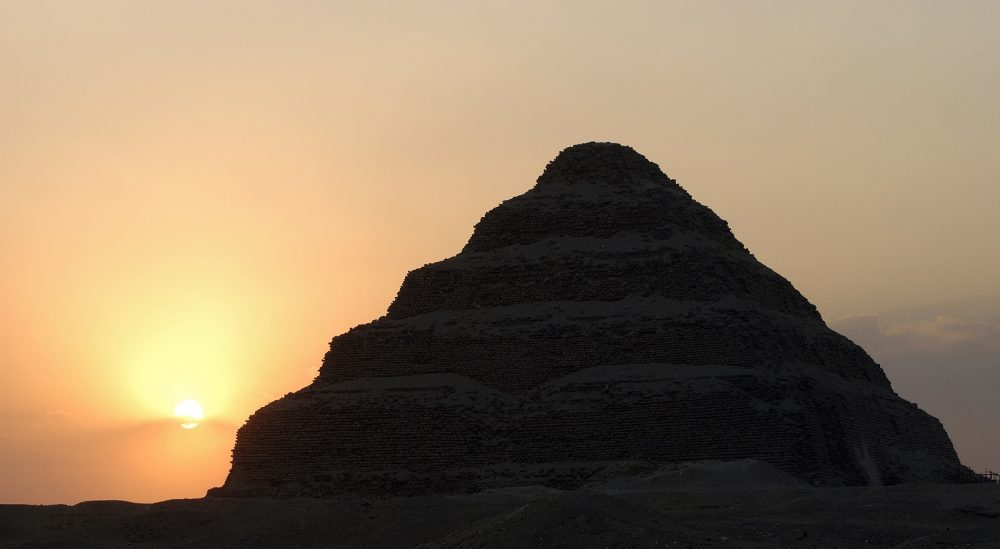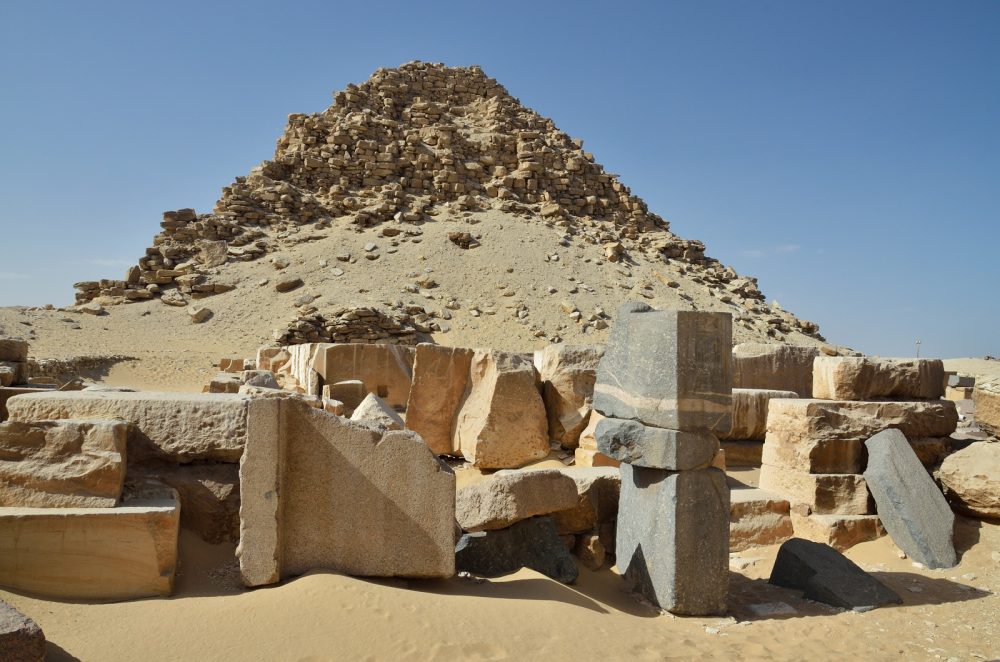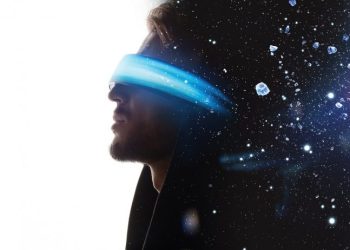Egypt is a land with an incredible history. The land of Pharaohs, pyramids, and golden sands is perhaps every archeologist’s dream. Yet, beneath the desert sands scorched by the immense heat, thousands of years of history lay hidden.
Beneath the sands of Egypt, incredible discoveries have been made, and countless more are waiting to be revealed to the world.
For thousands of years and even before written history, the land we call Egypt today was inhabited by people who slowly formed the foundations of a civilization that would become one of the greatest the world has ever seen. The ancient Egyptian Civilization left a mark not only in history but on Earth, and that mark will forever remain present, reminding us of the incredible accomplishments of our ancestors.

But of all the sites in Ancient Egypt, from Lower to Upper Egypt, which is the most important and notorious?
That question can hardly be answered eloquently. Egypt has magnificent ancient sites from top to bottom, from side to side. From one pyramid to the other. And it is the pyramid that left the most significant mark in the history of Egypt.
If you ask any traveler, adventurer, or explorer today what monument made the strongest impression on him, he would most likely say; the Pyramids at Giza. And there is not just one particular reason as to the why.
Some people are left amazed by the incredible size of these ancient structures. Others would admire the pyramids because of their architectural perfections. Finally, some would say their age is the most surprising reason, but the truth is, it is all of the above.
The pyramids are a true wonder, and they are one of the oldest and most important symbols present across numerous ancient civilizations. We don’t know why, but we know it is a global phenomenon.
And what better place to call “the most important in ancient Egypt” than where the Egyptian pyramid was born and where some of the most impressive and revolutionary structures were built.
Saqqara and the birth of a Pyramid
Whenever someone mentions the pyramids, the Pyramid of Khufu–the Great Pyramid of Giza–comes to mind. But long before Khufu, pyramids were built across Egypt on a massive scale. The Great pyramid perhaps marked the peak of the ancient Egyptian pyramid age. Long before the first stone pyramids, ancient Egyptians were already developing great stone buildings.
Mainstream archeologists maintain that the concept of a pyramidal tomb is the result of centuries of experiments and development.
Egyptologists say that mastabas are the direct predecessor of the pyramids. And well into the third dynasty, when Pyramids were already being built, Egyptian kings built Mastabas.
Around 2,780 BC, King Djoser kick-started a new chapter in Egyptian architecture.
He followed the traditions of his ancestors and built a much brick mastaba not far from Abydos, at Beit Khallaf. But he also commissioned a second tomb at Saqqara, and it was this second structure that marked an important milestone in the history of ancient Egypt.

Among the numerous officials of Pharaoh Djoser was a young man called Imhotep. Just as his father, Imhotep too was an architect. He had revolutionary ideas that were picked up and supported by Djoser. Eventually, the Pharaoh gave him free hands to plan the King’s second tomb. And Imhotep did not disappoint. Among the many innovations that Imhotep brought to ancient Egyptian architecture was the use of stone which was used sparingly in previous times.
Imhotep started building a square mastaba which was eventually expanded after going through extensive and fundamental changes. Imhotep eventually superimposed one mastaba upon another, each one being smaller than the last. He did so six times, resulting in six levels of the structure. The result was the step pyramid, and Imhotep had unknowingly perhaps, created the first Egyptian stone pyramid, changing history forever.
Djoser’s pyramid upon completion dominated the necropolis. Djoser’s successors tried copying the Pharaoh who successfully built the first pyramid.
Saqqara and the Great Enclosure
One of the oldest stone structures in Egypt is the so-called Great Enclosure or Gisr el-Mudir. Located at Saqqara and not far from Djoser’s Step pyramid and the buried pyramid, the massive structure is one of the most mysterious buildings in the history of Egypt.
We only know its massive. Gisr el-Mudir consists of a rectangular wall that was oriented from north to south, measuring 650 meters by 350 meters. The Great Enclosure’s walls are made of two outer walls created from roughly hewn limestone.
Inside the enclosure archeologists have not found any constructions or construction remains, concluding that there was most likely nothing inside the enclosure. They foind no traces of buried structures, mastabas or pyramids inside the walls of Gisr el-Mudir.

Experts had believed that the structure was an unfinished pyramid complex from the Third Dynasty. But later excavations revealed pottery fragments dating back to the late Second Dynasty, which is probably when the structure—whose purpose remains shrouded in mystery—was partially built.
The builder of the Great Enclosure is unknown, but experts argue it may have been built by Pharaoh Khasekhemwy, the final king of the Second Dynasty of Egypt. If true, it would mean that it was Khasekhemwy under whose reign ancient Egypt developed the first stone monument and that Djoser later copied and developed the structure turning it into the Step Pyramid Complex.
Saqqara and the Birth of Egypt’s Stone monument
Of all the places in ancient Egypt, it was at Saqqara where we can say with certainty that Egypt’s first stone monuments were built. Two of them dominate the necropolis: The Pyramid Complex of Djoser, as well as the Great Enclosure, also known as Gisr el-Mudir.
The exact reason why it was at Saqqara and not at Abydos, where great royal burials were built, is perhaps due to the availability of building materials. Limestone is believed to have been more readily available at Saqqara than at Abydos.
Egyptologists also argue that it is possible that the monuments at Abydos were a reflection of the experimental architecture of the time at Saqqara. Furthermore, a number of tombs dating back to the First and Second Dynasty at Saqqara were found to have limestone lining, roofing as well as portcullis slabs, which suggests that the quarrying and use of limestone were developed at Saqqara.
Eight Million Animal Mummies
Among the many discoveries made at Saqqara, the discovery of eight million animal mummies emphasizes the importance of Saqqara and its monuments. During 2011 excavations, researchers led by Salima Ikram, and an international team of researchers led by Paul Nicholson of Cardiff University came across nearly eight million animal mummies at the Dog Catacomb at Saqqara.
Experts argue that the mummified animals, of which around 4 million were birds, were intended to pass on the prayers of their owners to their deities.
Pyramid Texts
The necropolis of Saqqara includes among its many structures the Buried Pyramid, the Great Enclosure or Gisr el-Mudir, the pyramid complex of Djoser, the pyramid of Pharaoh Userkaf, the Pyramid of Djedkare, the Pyramid of Unas, Teti, as well as the Serapeum of Saqqara. And while these monuments are unique and tell an incredible story, a discovery inside one of the Pyramids at Saqqara changed our understanding of Egypt and its religious beliefs.
French Egyptologist Gaston Maspero discovered the so-called Pyramid texts. He excavated a hill in South Saqqara, finding it was the ruins of a larger structure which he eventually concluded must be the pyramid of Pepi I, a Pharaoh of the Sixth Dynasty. Maspero finally managed to enter the underground chambers of the Pyramid, and to his surprise, he found the walls covered in hieroglyphic texts.

The discovery was so impacting that Egyptologists thought that the Pyramid of Pepi I may not have been a pyramid but a mastaba since never before had anyone discovered any kind of text inside a pyramid.
Maspero went on to excavate another structure, around one kilometer away from the Pyramid of Pepi I. It was identified as the Pyramid of Merenre I, Pepi I’s successor. After entering its chamber, Maspero again discovered hieroglyphic text covering the walls of the chambers.
Eventually, more texts were found in the pyramids of Unas, Teti, as well as Pepi II.
The hieroglyphic text discovered inside the chamber of the pyramid turned out to be the oldest known corpus of ancient Egyptian religious texts. The oldest Pyramid texts are believed to date back to around 2,400 BC.
The Pyramid Texts featured spells or utterances that were meant to enable the transformation of the deceased into an Akh.
To date, archeologists have reported discovering Pyramid Texts in a total of 11 ancient Egyptian Pyramids dating back from around 2,353 to 2,107 BC.
Join the discussion and participate in awesome giveaways in our mobile Telegram group. Join Curiosmos on Telegram Today. t.me/Curiosmos











